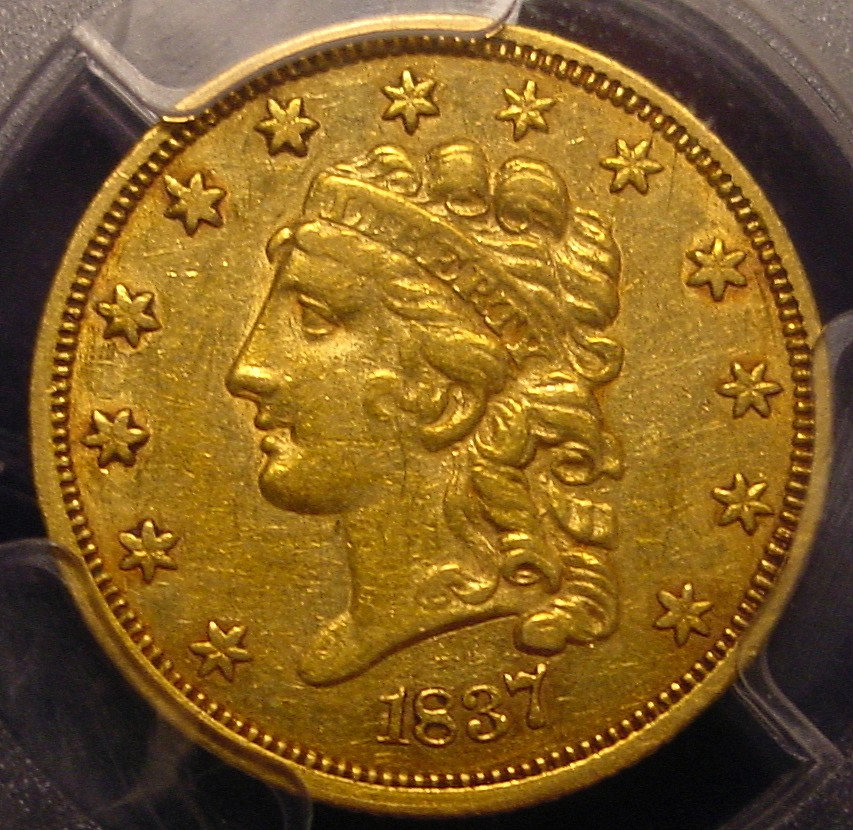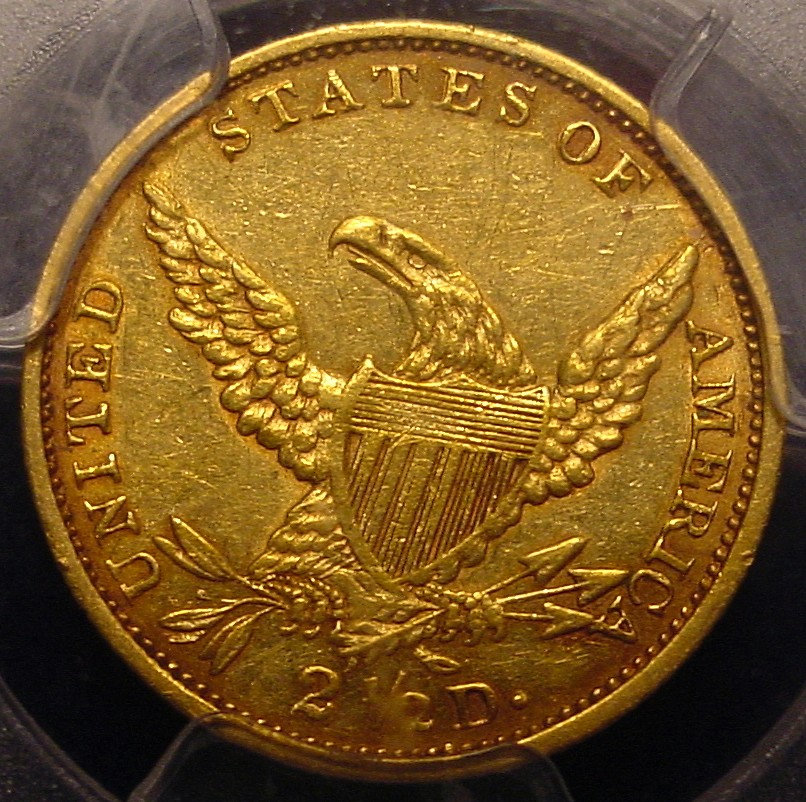Classic Head Gold Collection, Part 9, 1837 Quarter Eagle


Mintage 45,080
Estimated Number of Survivors 300
The 1837 Classic Head quarter eagle is the first of three “sleeper dates” in the series. With so much emphasis on the Charlotte and Dahlonega coinage, many collectors make the assumption that the Philadelphia Mint coins are common and relatively easy to obtain. For some dates, that is not a valid opinion. With an estimated 300 survivors, the 1837 half eagle is not a common coin, especially in grades higher than Very Fine and Extremely Fine.
As has often happened during an economic recession or depression, the demand for new coins declined in wake of the Panic of 1837. The mintage dropped from over 650 thousand quarter eagles in 1836 to just over 45 thousand pieces.
The coin displayed above is accurately graded as an AU-53. The devices were not well struck, but there is a fair amount of mint luster in the fields and full mint surfaces within the letters.
I purchased this piece in a Heritage auction. It is the lowest grade piece in my set.
Comments
It may be a lower grade, but still very nice. Bill, you quote survival rates in each of your postings on these gold coins. Since they are all very much lower than mintage, what reasons are generally assumed for the thousands of pieces not surviving? Jewelry? Melt for other uses? Lost? Reclaimed for subsequent minting? Any ideas? Cheers, RickO
Almost all of my survival estimates came from "Coin Facts." It has been my experience that their numbers tend to be on the low side, but I don't know of another published source for this information. When I put together my early gold exhibit, I added all of the survival estimates from the Dannreuther - Bass die variety book. I looked at "Coin Facts," which seemed a bit low to me and the estimates that Dave Bowers give in his type coin "Red Book." seemed high.
As why so much of the mintage has been destroyed, I can only speculate. Some coins did become worn, and when they were really worn, they were probably sent back to the mint and melted. In those days a gold coin's value was set by its weight, not its face value. If a coin was too light, it was worth what it weighed. Therefore a a light weight gold coin would have been a problem. The solution? Melt it and get have the gold made into a new coin. The mint did that free of charge for much of the 19th century.
Another factor might have been mint policy. There were times when the mint withdrew obsolete coins from circulation and replaced them with new pieces.
Then there were always the coins that were exported and melted. The did not happen as often with the Classic Head gold, like it did with the 1795-1834 "old tenor gold," but it was a factor.
Great coin and write up!
My YouTube Channel
Thanks Bill for the write up.
I picked one up in similar condition 20 yrs ago and since that time I've rarely seen them come up for sale.